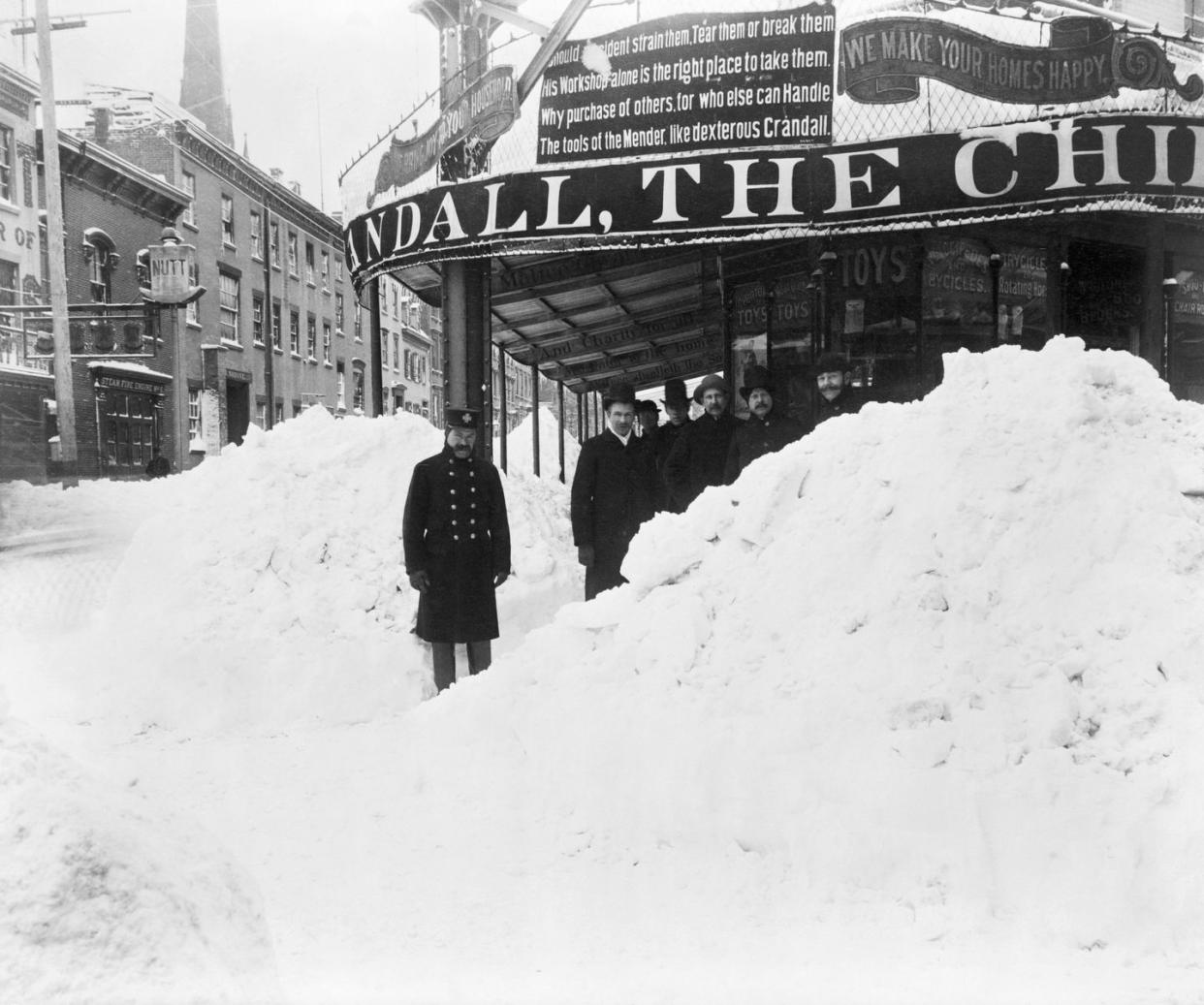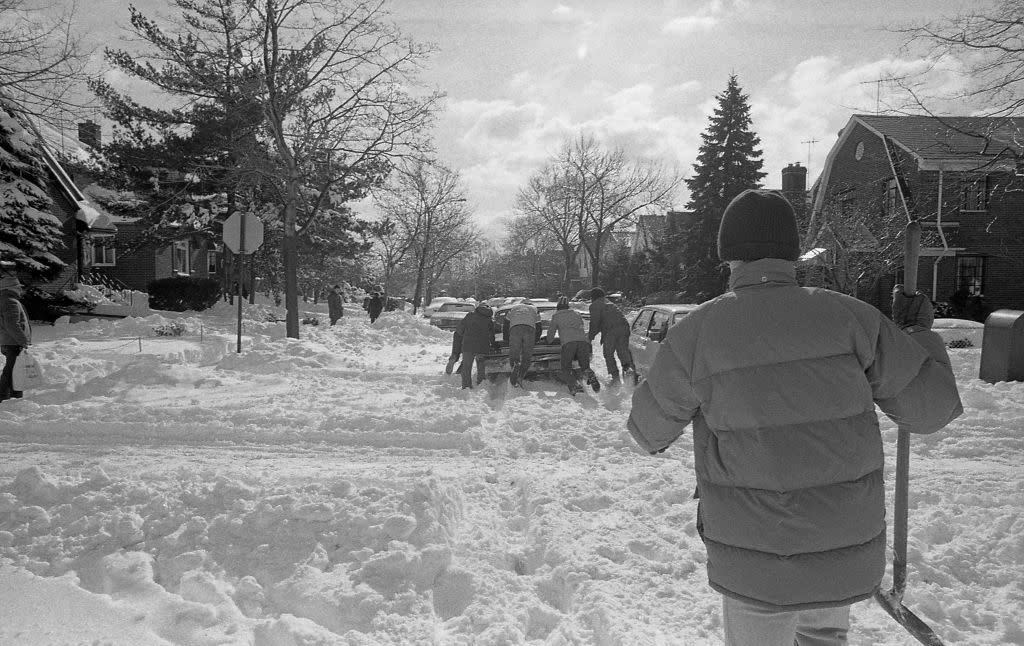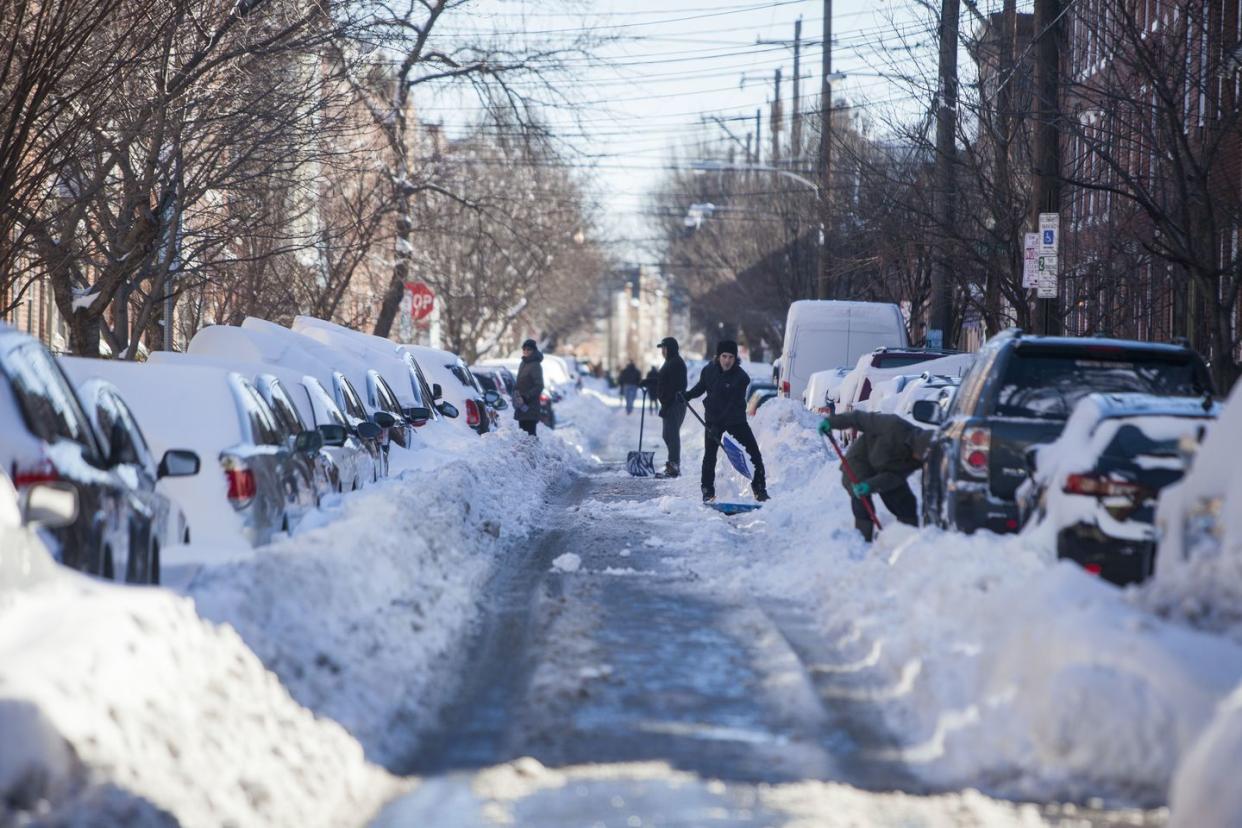Take a Look Back at the 10 Worst Nor’easters in Recorded History

A nor’easter storm develops within 100 miles of the East Coast and moves toward land.
The most powerful nor’easters can punish land with multiple feet of snow and high winds, causing damage and casualties.
The polar jet stream moves cold Arctic air to meet the Gulf Stream’s warm air, wreaking havoc.
Come wintertime, Nor’easters are some of the most powerful damaging forces on the East Coast. While these storms can technically occur at any point in the year, Nor’easters are most frequent (and violent) in the winter months, exacting billions of dollars in damage one monumental storm at a time, according to the National Weather Service.
A nor’easter typically develops between Georgia and New Jersey, within 100 miles of the East Coast. The storms progress northwestward and almost always bring either heavy rain or snow, along with gale-force winds and rough seas, which can lead to coastal flooding.
❄️ Science is on our side. We’ll help you make sense of it all—join Pop Mech Pro.
The East Coast breeds these storms as the winter’s polar jet stream moves cold Arctic air south across the plains of Canada and the United States, then east toward the Atlantic Ocean. There, the cold air meets warm air from the Gulf of Mexico. The warm waters of the Gulf Stream help keep the coastal waters relatively mild during the winter, which helps warm the cold winter air over the water. “This difference in temperature between the warm air over the water and cold Arctic air over the land,” the National Weather Service explains, “is the fuel that feeds nor’easters.”
Don’t take our word for the destructive power of these storms, though. Just look back at the 10 worst nor’easters in recorded history.
The Great Blizzard of 1888

Impact: 4+ feet of snow, stranded trains, downed utilities
Casualties: 400 deaths
From New York City up through New England, this March 1888 storm blasted the region with up to 50 inches of snow—reports claim the East River even froze—and resulted in 400 deaths, largely centered around New York. The storm yielded massive destruction, but it was instrumental in making progress to protect cities from future nor’easters. The devastation of infrastructure pushed forward efforts to bury utility lines, encouraged the use of underground transportation, and even served as a precursor to the start of the Weather Bureau.
Storm of the Century (1950)
Impact: 5+ feet of snow, bitter cold, strong winds
Casualties: 300 deaths
Thanksgiving 1950 was a bitter cold affair for those living across the Northeast. Over 20 states were wrapped up in the Storm of Century, which dropped up to 62 inches of snow in some places—enough to crush whole buildings under the immense weight. The wind was strong too, whipping up to 60 miles per hour in some cases.
Ash Wednesday (1962)
Impact: Flooding, 3+ feet of snow
Casualties: 40 deaths
The early March 1962 storm combined high winds with high spring tides to bring flooding into the equation. Ocean City, Maryland, suffered four feet of floodwaters, and citizens across the region were using boats to escape destruction up to two miles inland. With an equivalent of over $1.5 billion in damage in today’s dollars, thousands of homes were destroyed, and changes were made to oceanfront storm standards.
The Blizzard of 1978

Impact: Motorists froze to death
Casualties: 100 deaths
By sheer snowfall, the roughly 27 inches of accumulation that hit New England in February 1978 doesn’t seem like a lot, but it came across just two days and caught people unaware. Around 100 people were killed—another 4,500 were injured—and many stranded motorists froze to death while stuck on major highways. An estimated 10,000 vehicles were left stranded by the sudden storm.
The Perfect Storm (1991)
Impact: Flooding, wind, damage
Casualties: 13 deaths
Maybe you’ve read the book. Or seen the movie. During Halloween 1991, the Perfect Storm offered up plenty of scary meteorological phenomena. A storm known more for its high winds and surging waves than for its rain, snow, and freezing temperatures (although it had those too), the Perfect Storm stretched all the way from Florida to Massachusetts, where the damage was particularly unrelenting. The post-storm notoriety came about when the nor’easter switched forms—first into a tropical cyclone and then into a hurricane, which led to the sinking of the Andrea Gail, the subject of its namesake book and movie.
Storm of the Century (1993)
Impact: Damage, 4+ feet of snow, wind
Casualties: 310 deaths
The Storm of the Century (1993 version) first formed in the Gulf of Mexico and then grew as it ran north. With roughly $6 billion in damage caused along the entire East Coast, the storm killed 310 people and left millions without power. All the major airports on the East Coast were shut down at the same time and homes were damaged—some completely lost to the sea—from Florida to North Carolina to New York.
Blizzard of 1996
Impact: Long-lasting snow, gusting wind
Casualties: 60 deaths
This storm wasn’t reserved for the coast. Up to three feet of snow dropped from Pennsylvania to Ohio and from West Virginia to Washington, D.C. (New York and New England got their fair share, too). The snow didn’t just come—it stayed, knocking out travel in major metropolitan areas. Transportation was a mess, and major cities were cut off from the rest of the country for days at a time as airports, trains, and cars were all stuck at a standstill.
April Nor’easter (2007)
Impact: Flooding, winds
Casualties: 18 deaths
The late nor’easter first hit on April 14 and led to a months-long tax-filing extension granted by the IRS. It first impacted New England and came with a mix of both snow and rain that brought about flooding, all while high winds added an additional element of damage.
Halloween Nor’easter (2011)
Impact: 2+ feet of snow, ice, winds
Casualties: 39 deaths
There was still snow on the ground come Halloween 2011 in New England. The early season storm brought with it more than two feet of snow, but also plenty of wind and rain-turned-ice. The combination ripped apart trees from New York north and the early season snowfall set records throughout the region for October snow.
The Historic Nor’easter (2016)

Impact: 3 feet of snow, storm surge, winds
Casualties: 55 deaths
This storm has many names—from Snowzilla to the Blizzard of 2016 and Winter Storm Jonas—but the National Weather Service dubbed it the “Historic Nor’easter.” It left 12 states and Washington, D.C. in states of emergency in January 2016. The two to three feet of snow across the East Coast was joined by powerful winds that kicked up storm surges stronger than Hurricane Sandy in some places. The mixture of snow and wind made travel treacherous, shutting down roads and airports, while stranding hundreds of motorists across the region, many left overnight on major roadways.
You Might Also Like
